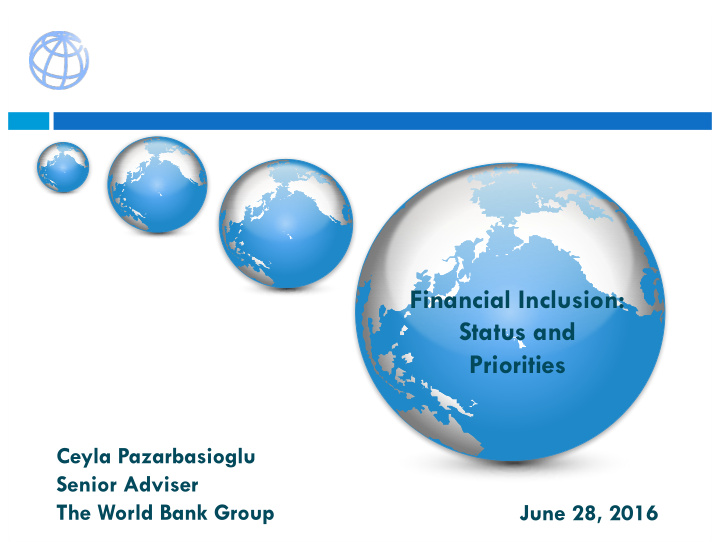



Financial Inclusion: Status and Priorities Ceyla Pazarbasioglu Ceyla Pazarbasioglu Senior Adviser International Monetary Fund May 21, 2015 The World Bank Group June 28, 2016
Financial inclusion creates opportunities • Broader Inclusion • Customer-centered product innovation • Financial capability • Strong consumer protection • Better financial infrastructure • More and interoperable unserved access points served
…but remains a challenge 3 ¨ 2 billion adults (38 % of global adult population) ‘unbanked’ Global Findex, 2015 ¨ Most ‘underserved’ groups: low-income individuals; women and SMEs ¨ Financial inclusion relates to WBG Twin Goals of reducing poverty and boosting shared prosperity ¨ Technology advances enable lower cost financial services ¨ Universal Financial Access target - 1bn new accountholders by 2020 ¨ Programs in 25 countries (over 70 percent of the world’s unbanked adult population)
Barriers require adequate policies 4 Demand-side Supply-side (Reasons for Not Owning a Bank Account) (Reasons for Limited Supply of Appropriate Products) Affordability Deficient payments, credit, or ICT infrastructure Lack of Need/Family member account Lack of reliable information on consumers Physical access/distance to nearest branch Inappropriate legal and regulatory frameworks Lack of transparency & unpredictability of fees Incomplete secured transaction frameworks Eligibility requirements Market distortions (subsidized lending programs) Lack of necessary documentation Rigid customer due diligence requirements Lack of trust in financial institutions Religious reasons Source: Global Findex 2014 (for demand-side factors)
Recommend
More recommend